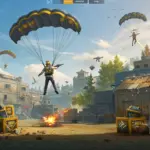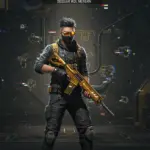Maximize Your Free Fire Rank: Top 5 Updated Strategies for 2025
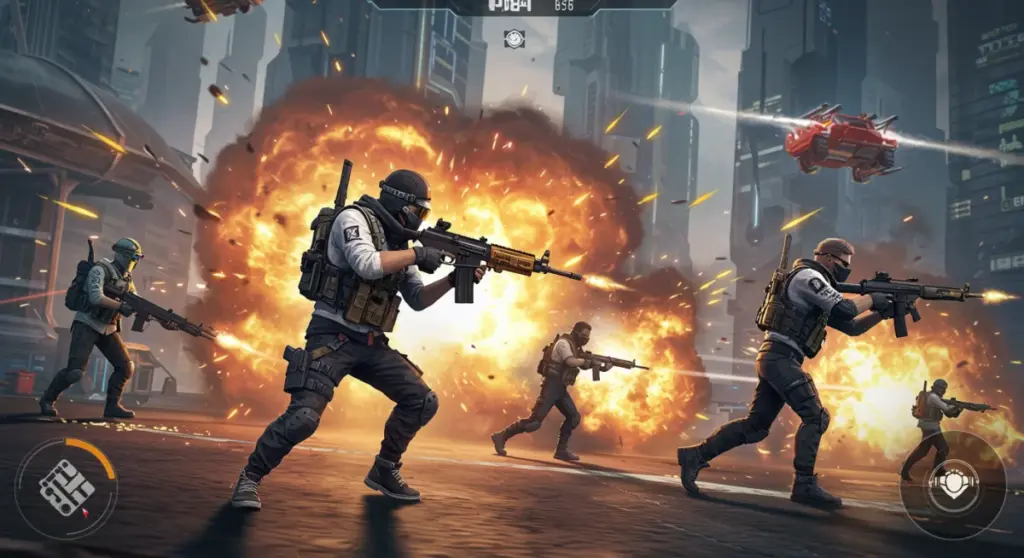
Anúncios
To consistently climb the ranks in Free Fire during 2025, players must adopt updated strategies focusing on advanced map control, refined tactical engagements, optimized character abilities, and superior team communication for sustained high-tier performance.
Are you ready to truly maximize your Free Fire rank: top 5 updated strategies for 2025? As the game evolves, so too must your approach to climbing the competitive ladder. This guide will equip you with the essential knowledge and tactics to dominate the battlefield and secure your spot among the elite.
Understanding the 2025 Meta: A New Era of Free Fire
The Free Fire meta is a constantly shifting landscape, and 2025 brings its own set of challenges and opportunities. Players who adapt quickly to these changes will find themselves at a significant advantage. This year, we’re seeing a stronger emphasis on versatile loadouts and adaptive playstyles, moving away from rigid strategies of the past.
Understanding the current meta involves recognizing which weapons are dominant, which character abilities are most effective in synergy, and how the map changes influence rotational patterns. Ignoring these shifts can quickly lead to stagnation in rank progression.
Weapon Tier List and Adaptability
Every season introduces balance changes that elevate some weapons and diminish others. For 2025, a diverse understanding of the weapon pool is crucial. You shouldn’t just stick to one type of weapon; instead, be prepared to utilize a range of firearms based on the situation.
- Assault Rifles (ARs): Still the backbone of combat, focus on ARs with good mid-range accuracy and damage output.
- SMGs: Essential for close-quarters engagements, especially in urban areas or late-game circles.
- Snipers/DMRs: High-skill, high-reward weapons for long-range eliminations and suppressing enemies.
- Shotguns: Unmatched in extreme close-range, perfect for clearing buildings.
The key here is not just knowing which weapons are strong, but being comfortable using them. Practice with different weapon types in training mode to broaden your versatility. This adaptability will allow you to pick up any weapon found and still perform effectively, a critical skill in the fast-paced world of Free Fire.
Strategy 1: Master Early Game Rotations and Loot Paths
The first few minutes of any Free Fire match are arguably the most crucial. Your initial landing, looting efficiency, and first rotation significantly impact your survival chances and resource accumulation. A well-executed early game sets the stage for a strong mid and late-game performance.
Many players make the mistake of landing in highly contested zones without a clear plan, or conversely, landing in isolated areas with poor loot. The optimal strategy balances risk and reward, aiming for areas that offer decent loot without immediate, overwhelming enemy presence.
Optimal Landing Zones and Risk Assessment
Identifying optimal landing zones involves a quick scan of the airplane path and predicting enemy movements. Look for clusters of buildings that are slightly off the direct path of the majority of players. These spots often provide sufficient loot for your squad without forcing an immediate, desperate fight.
- High-Tier Loot, Medium Contest: Areas like Clock Tower or Peak can offer excellent gear but expect early engagements. Only land here if your squad is confident in early fights.
- Mid-Tier Loot, Low Contest: Smaller clusters of houses or specific compounds often provide enough resources for your team to gear up safely before moving to the next zone.
- Avoid Hot Drops (Unless Pro-Level): Unless you are a highly coordinated pro squad, consistently landing in hot drop zones like Bimasakti Strip can lead to quick eliminations and negative rank points.
Once on the ground, prioritize securing a weapon and some basic armor. Communicate with your teammates about what you find and what you need. Efficient looting means not lingering too long in one spot; gather what’s necessary and prepare for your first rotation.
Strategy 2: Advanced Map Awareness and Zone Prediction
Beyond simply knowing the map layout, advanced map awareness involves anticipating where the next safe zone will shrink and understanding enemy movement patterns. This predictive capability allows you to position your squad advantageously, securing power positions and avoiding unfavorable engagements.
A common mistake is chasing the zone rather than moving with it. This reactive play often puts you in a vulnerable position, exposed to enemies who have already established control within the next safe area. Proactive movement is key to survival and dominance.
Predicting Safe Zone Shrinks
While safe zone shrinks are somewhat random, experienced players can often make educated guesses based on the initial zone and the overall map topography. Look for open areas or central points that are likely to be included in subsequent zones. Moving towards these areas early can grant you control of key choke points.
- Central Map Control: Aim to hold central positions that offer good visibility and cover, allowing you to observe multiple approaches.
- High Ground Advantage: Always prioritize securing the high ground. It provides a clear line of sight and makes it harder for enemies to push you.
- Choke Point Management: Identify narrow passages or bridges that enemies must cross to enter the safe zone and set up ambushes or defensive positions.
This predictive movement also means you can often avoid direct confrontations with large squads by rotating around them, rather than through them. Use vehicles for faster rotations across open terrain, but always be mindful of potential ambushes when dismounting.
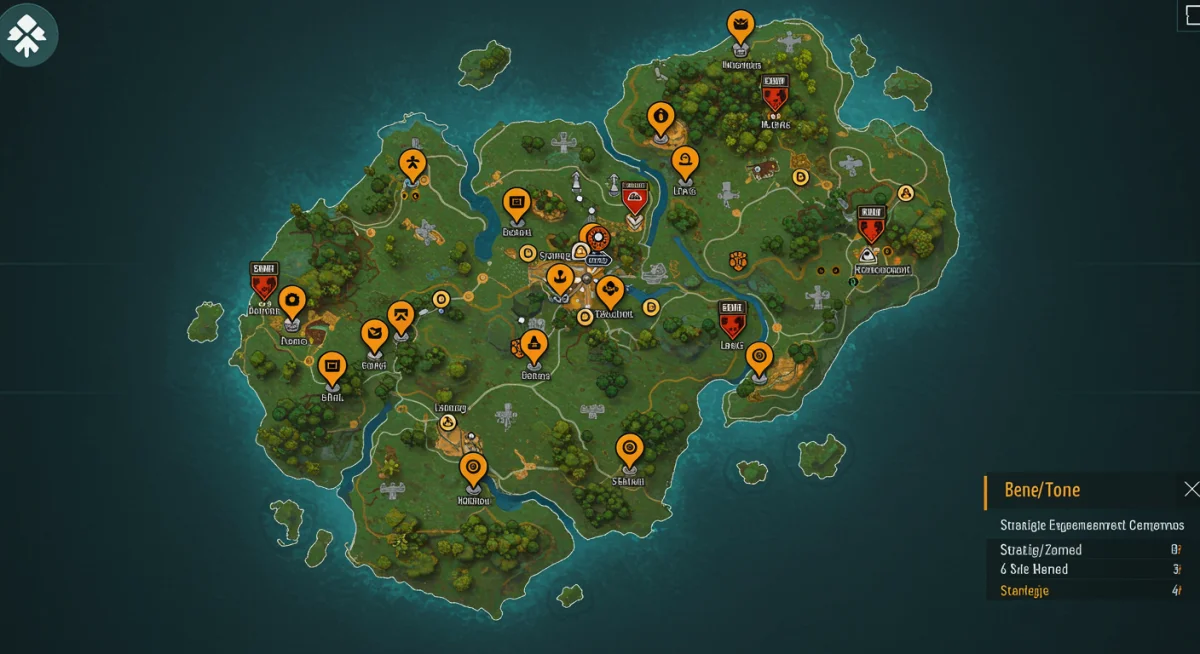
Strategy 3: Tactical Engagements and Team Coordination
Winning gunfights in Free Fire isn’t just about aim; it’s about smart tactical engagements and seamless team coordination. Even players with superior individual skill can be overwhelmed by a well-coordinated enemy squad. Communication and strategic positioning are paramount for securing victories.
Avoid rushing into fights without a clear plan. Assess the enemy’s numbers, positioning, and potential escape routes before committing to an engagement. A calculated approach will always yield better results than impulsive aggression.
Effective Communication and Role Assignment
In a squad, everyone should have a general understanding of their role, even if it’s fluid. Designating a shot-caller, a flanker, and a support player can significantly improve team cohesion. Clear and concise callouts are vital for real-time adjustments.
- Shot-Caller: The player who makes quick decisions on rotations, pushes, and retreats.
- Front-liner/Entry Fragger: The player who initiates engagements and creates openings.
- Support/Healer: Focuses on providing cover fire, healing teammates, and carrying utility items.
- Flanker: Looks for opportunities to bypass enemy defenses and attack from unexpected angles.
Use the in-game communication system effectively. Call out enemy locations, their health status, and any utility items they might be using. Avoid unnecessary chatter that can distract your teammates. A well-timed ‘push now’ or ‘fall back’ can turn the tide of a fight.
Another aspect of tactical engagement is understanding when to disengage. Not every fight needs to be won, especially if the odds are heavily stacked against your team. Knowing when to cut your losses and reposition can save valuable rank points.
Strategy 4: Optimized Character Combos and Pet Selection
Free Fire’s extensive roster of characters and pets offers a vast array of strategic possibilities. For 2025, understanding how to synergize their abilities to create powerful combinations is more critical than ever. A well-chosen character combo can provide significant advantages in combat, healing, or utility.
Many players simply pick characters they like without considering how their skills complement their playstyle or their teammates’ abilities. This oversight can leave significant potential on the table, making it harder to win against optimized squads.
Synergistic Character Abilities
When building your character combo, think about how active and passive skills interact. For instance, a character that boosts movement speed can pair well with one that offers sustained healing, allowing for aggressive pushes and quick retreats.
- Aggressive Playstyle: Combine characters with damage-boosting or rushing abilities (e.g., K, Alok, Skyler) to overwhelm opponents.
- Defensive Playstyle: Focus on characters that provide healing, damage reduction, or utility (e.g., K, Jota, Wukong) for sustained engagements.
- Support Playstyle: Choose characters that benefit the entire squad (e.g., Dimitri, Thiva) to keep everyone in the fight.
Pets also play a crucial role, offering passive bonuses that can significantly impact gameplay. A pet that provides extra gloo walls or reduces cooldowns can be just as important as a character’s active skill. Experiment with different combinations to find what works best for your team composition and preferred strategy.
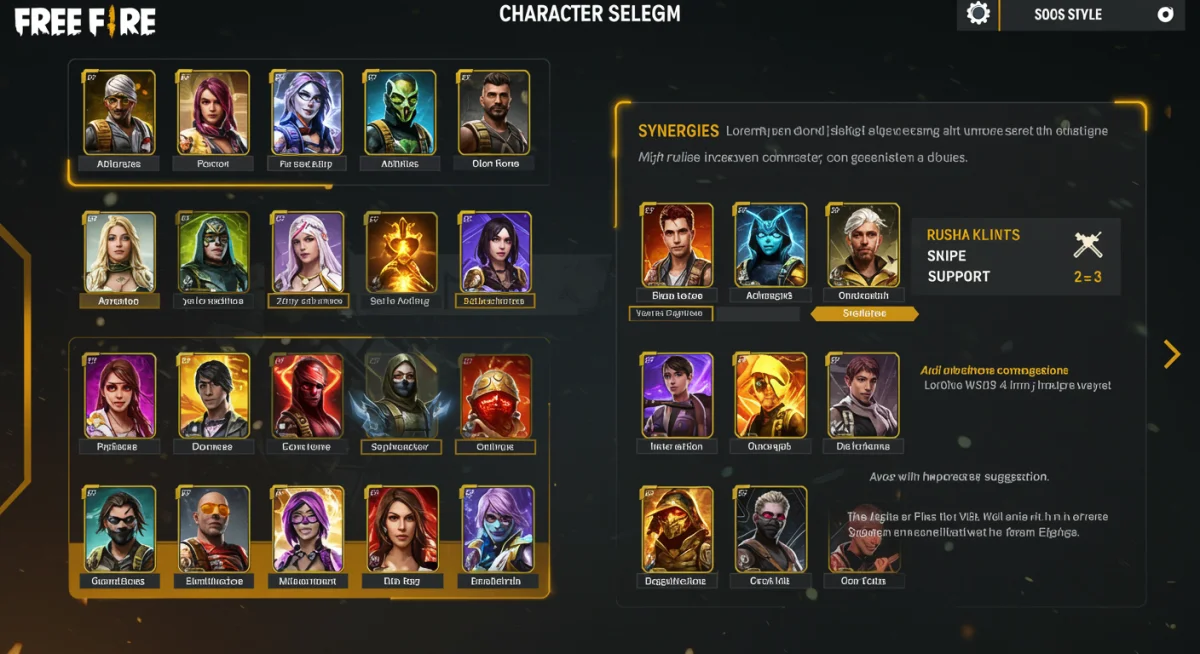
Strategy 5: Continuous Improvement and VOD Review
The journey to the top rank in Free Fire is not a one-time effort; it requires continuous learning and self-assessment. Even the best players make mistakes, and the key to improvement is recognizing those errors and actively working to correct them. This involves reviewing your gameplay and staying updated on community insights.
Many players fall into the trap of simply playing more games without reflecting on their performance. While practice is important, deliberate practice, coupled with analysis, is what truly leads to significant skill improvement and consistent rank progression.
Analyzing Your Gameplay (VOD Review)
Recording your gameplay and reviewing it is one of the most effective ways to identify weaknesses and refine your strategies. Look for patterns in your deaths, missed opportunities, and poor decision-making. Don’t just watch; actively analyze what went wrong and how it could have been handled better.
- Identify Common Mistakes: Are you consistently dying to flankers? Are your rotations too slow? Pinpoint recurring issues.
- Evaluate Decision-Making: Did you push when you should have retreated? Did you loot too long? Assess your in-game choices.
- Optimize Aim and Mechanics: Review gunfights to see if your crosshair placement, recoil control, or movement can be improved.
- Team Coordination: If playing with a squad, discuss moments where communication broke down or a different strategy could have been more effective.
Beyond self-review, actively engage with the Free Fire community. Watch professional players, read strategy guides, and participate in discussions. Learning from others’ experiences and insights can provide fresh perspectives and accelerate your own learning curve. The game is always evolving, and so should your understanding of it.
| Key Strategy | Brief Description |
|---|---|
| Early Game Mastery | Efficient landing, swift looting, and smart initial rotations to secure resources and avoid early elimination. |
| Advanced Map Awareness | Proactive zone prediction and strategic positioning to gain an advantage over opponents. |
| Tactical Teamwork | Seamless communication, role assignment, and calculated engagements for squad dominance. |
| Character Synergy | Optimizing character and pet combinations for maximum combat effectiveness and utility. |
Frequently Asked Questions About Free Fire Rank Push
For 2025, versatile characters like K (Master of All), Alok (Drop the Beat), and Skyler (Riptide Rhythm) remain top choices due to their healing and utility. Pairing them with passive skills like Jota’s (Sustained Raids) or Kelly’s (Dash) creates powerful combinations for aggressive or defensive playstyles, adapting to various combat scenarios.
Team communication is absolutely vital for higher ranks. Clear callouts for enemy positions, health status, and rotation plans prevent misplays and ensure coordinated pushes or retreats. Without effective communication, even skilled individual players will struggle against organized squads, making it a cornerstone of successful rank climbing.
To avoid early eliminations, prioritize landing in less contested zones that still offer decent loot. Avoid direct hot drops unless your squad is highly confident. Focus on securing a primary weapon and basic armor quickly, then communicate with your team to establish a safe rotation path towards the first safe zone, minimizing exposure.
For optimal rank progression, a balance between survival and kills is crucial. While survival points are significant, high kill counts also contribute substantially. Focus on securing top placements (top 10 or higher) and engaging in tactical fights where you have an advantage, rather than blindly chasing kills or hiding too passively.
Consistent gameplay review, ideally after every few matches or after particularly challenging ones, is highly recommended. Focus on one or two specific aspects, like early game rotations or late-game engagements. Regular, focused analysis helps identify recurring mistakes and allows for quicker adaptation and refinement of your overall strategy.
Conclusion
Climbing the Free Fire ranks in 2025 demands more than just raw skill; it requires a strategic mindset, continuous adaptation, and a willingness to analyze and improve. By mastering early game rotations, enhancing your map awareness, refining team coordination, optimizing character abilities, and consistently reviewing your gameplay, you will be well-equipped to dominate the battlefield. Remember, every match is an opportunity to learn and grow, pushing you closer to the coveted Heroic or Grandmaster tiers. Embrace these updated strategies, and your Free Fire rank will undoubtedly soar.

